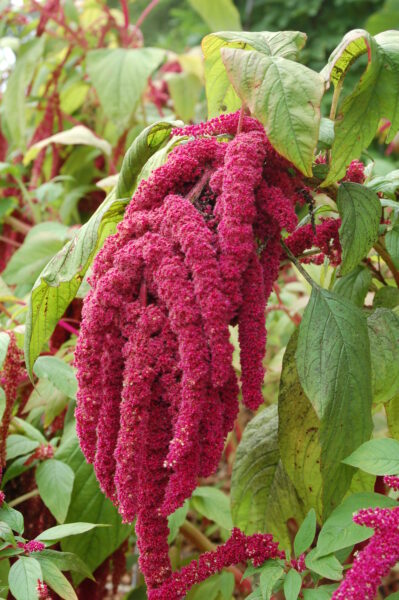A staple grain for Mayans, Aztecs, and the Incas, Victorian English gardens took up this striking annual for ornamental purposes. Fast-growing, disease-free, with dramatic blooms and nutritious seeds, this plant has something for everyone. Plants quickly produce unusual and dramatic plumes that cascade down from summer through fall. Harvest cuts for fresh bouquets when at least three-fourths of the flowers are open. For everlasting dried flowers, harvest when seeds are set and flowers firm up — place the stems in a dry, tall container to preserve their cascading habit.
Harvest edible seeds by allowing plants to fully bloom. When flowers begin drying with slight browning, cut off the flowering stem and place in a paper bag to finish drying. Once dry, flowers must be separated from the grain and tossed in a breeze to separate from the chaff. Seeds can be ground into flour, cooked in liquid, or used in place of sesame seeds.
Bird lovers can leave flowers to dry on plants for birds to feast on in the fall after frost.
Because amaranth grows large so quickly it isn’t easily grown as greenhouse starts, but we sow ours late and offer them for a limited time!
Can be used as trap plants to attract cucumber beetles away from cucumber plants. Research and home gardener observations indicate that the beetles seem to prefer Amaranth, and despite being skeletonized and covered with cucumber beetles plants will continue growing their long red ropes.
